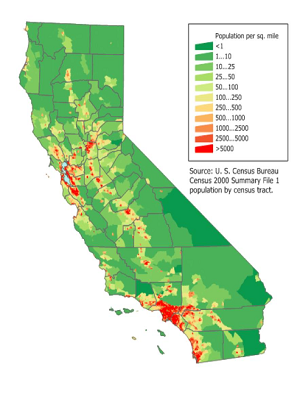This grade 9 Biology unit focuses on the inquiry question, “How do our activities affect the environment and what can we do to limit our negative effects?”The purpose of this month-long unit is to provide the big picture and roadmap for a more holistic and thematic approach to the traditional NGSS unit of the History of the Atmosphere. By studying what is normal in energy cycling, we can also appreciate what can impact changes. Following this progression will cycle students back to how the unit started with fires, giving students the opportunity to recognize an unfortunate positive feedback loop and its consequences. The students will develop and revise their models as they progress through model-making; reading graphs, charts, and maps; using other texts and internet searches, growing plants; doing an actual and virtual lab; watching videos; performing calculations; and engaging in an article read. This unit supports the NGSS Science and Engineering foci of Cycling of Matter, Photosynthesis and Cellular Respiration and History of Earth’s Atmosphere and Geosphere. This helps students relate photosynthesis and cellular respiration to themselves and understand the importance of the processes. This unit draws on the Reading Apprenticeship instructional framework and classroom routines including Thinking Aloud, partner sharing, Talking to the Text, questioning, and identifying key/noteworthy ideas.
Physics and Earth Science, Grades 9-12
This grades 9-12 Physics and Earth Science unit focuses on the inquiry question, “What is Earth’s physical history?” This 3.5 week text-rich unit supports students’ engineering/science practices while developing students’ science reading skills. It helps students develop models based on evidence, relate components within the model, and scientifically reason and defend claims. The unit supports the NGSS Science and Engineering Practices of Developing and Using Models and Constructing Explanations and Designing Solutions, utilizing the Claims, Evidence, Reasoning framework (CER) which may be used throughout the year. The unit supports the cross cutting concepts of Energy and Matter, Patterns, and Stability and Change as it delves into the disciplinary core ideas of Nuclear Processes, The History of Planet Earth, and Earth Materials and Systems. The unit makes use of the Reading Apprenticeship instructional framework and classroom routines including partner sharing, Talking to the Text, questioning, and identifying key/noteworthy ideas.
Biology, High School
This high school Biology unit focuses on the inquiry question, “What makes us who we are?” Students will learn about the structure and function of DNA. Students will extract DNA from strawberries, analyze DNA’s molecular structure, observe how DNA is stored within cells, and explore how and why DNA is replicated. This unit was designed to be taught virtually. Educators may be interested in modifying the activities/materials for in-person instruction. The unit draws on the NGSS Science and Engineering Practices of asking questions and defining problems and developing and using models, the cross cutting concepts of systems and system models, and many disciplinary core ideas related to structure and function, inheritance, and biodiversity. It also draws on Reading Apprenticeship routines of partner Think Alouds, Talking to the Text, and social scaffolding through independent, partner, and small group work and whole group discussion.
Engineering, Grade 9-12
This grades 9-12 Engineering unit focuses on the inquiry question, “What makes for the best design?” This 18-class unit supports students’ engineering practices while developing their science reading skills. It empowers students to learn firsthand about Civil Engineering, with a focus on forces, materials, skyscrapers, and bridges. Students learn about Civil Engineering principles through hands-on lab activities and through investigations of real-world engineering failures. The unit supports NGSS Science and Engineering Practices including analyzing and interpreting data, designing solutions, and engaging in argument from evidence, and reinforces the importance of testing as part of the Engineering Design Process. The unit also makes use of the Reading Apprenticeship instructional framework and classroom routines including Think-Pair-Share, questioning, and identifying key/noteworthy ideas.
Engineering, Grade 8
This grade 8 Engineering unit focuses on the inquiry question, “What is the best balloon rocket design?” This 10-day unit helps support and develop students’ skills in the science investigation and engineering and design practices. The unit supports NGSS Science and Engineering Practices including using the engineering design cycle to build, test, evaluate, and improve designs using criteria and data and scientific principles to explain the phenomenon. The unit makes use of the Reading Apprenticeship instructional framework and classroom routines including setting purposes for scientific readings, Thinking Aloud, partner sharing, Talking to the Text, questioning, and identifying key/noteworthy ideas. The unit offers Interactive Notebooks and Claim-Evidence-Reasoning notetakers to support student learning.
Chemistry, Grade 10
This grade 6 Physical Science unit focuses on the inquiry question, What is the chemistry of a candle? This 9-lesson unit supports asking questions and defining problems, as well as using mathematical and computational thinking, while developing students’ science reading skills in the pursuit of introducing chemical reactions and equations. The unit is ideal for the beginning of the school year to help students begin their fluency in chemistry as well as nurture their identities as chemists or scientists. Beginning with a familiar, yet complex phenomenon, the unit walks students through analyzing evidence from observations, scientific documents, and chemical equations to help them make sense of things like a chemist. The unit makes use of the Reading Apprenticeship instructional framework and classroom routines including Think-Pair-Share, Talking to the Text (annotating) for making connections and predicting, as well as using Sentence Frames (stems).

